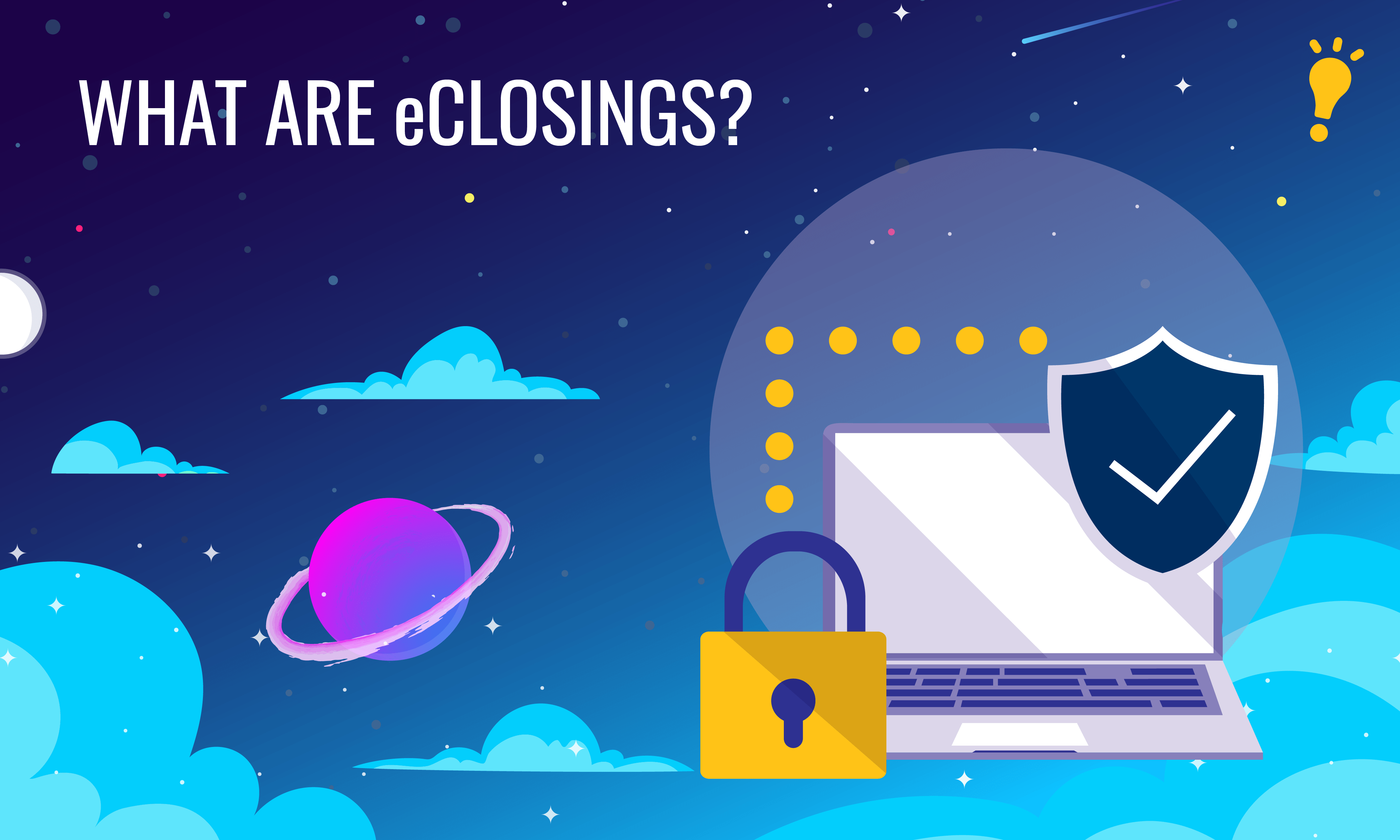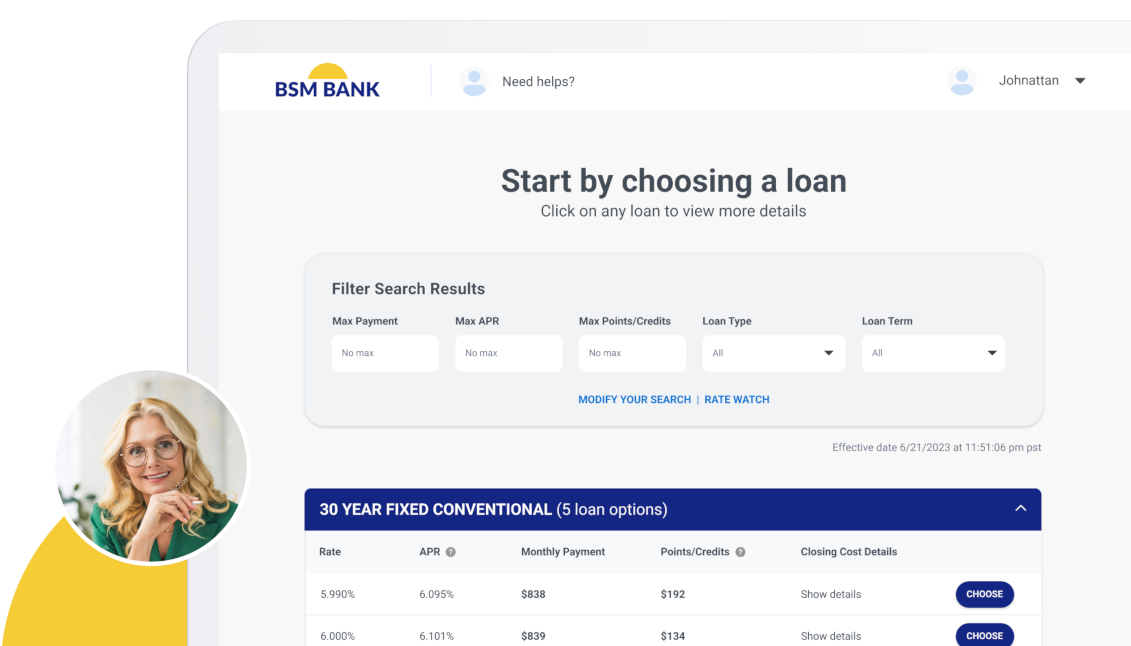It seems as if there is no end to words that have a new meaning after putting the letter “e,” which stands for “electronic,” in front: email, e-book, ecommerce, e-cigarette, to name a few. eClosings are a relatively new term, used to describe electronic (digital) closings.
eClosings Explained
The idea behind an eClosing is to sign all the closing paperwork digitally, the e-documents. This is done pretty much the same way as a traditional mortgage, but using e-signatures and e-notarization. The process is then e-recorded.
An eClosing is done without the buyer or seller of the property needing to attend a physical closing—those affairs where you sit around a table and sign paper after paper with an attorney or a title representative, real estate agents and possibly lenders in the room with you. A fully electronic closing is electronic across the board, where loan documents are created, sent out, signed, notarized and recorded—all digitally.
All eClosing might be like this someday, but at the time of this writing, we are in a transitional phase where most eClosing are a sort of hybrid, where borrowers sign some paperwork digitally and some the traditional way, using pen and paper, also called “wet signing.”
Technically, if you sign only one document digitally, such as the closing disclosure, you are participating in an eClosing. But you will probably still need to attend a physical closing to sign the property’s deed or note (and other paperwork, depending on your particular closing) with an actual pen on paper.
Why the Holdup on a Complete eClosing Transaction?
Buying property is a complex matter, particularly when a mortgage loan is involved. There are many more moving parts involved in the purchase of real property than when you buy something from Amazon one-Click, for example.
When you close on property, especially with a mortgage involved, there are legalities surrounding the process, and all those parts need to translate to digital. We’re talking about signing papers, recording public land records and electronic notarization of paperwork. To do this all virtually, you need an interconnected technological infrastructure, and until that is perfected, you will continue to see the hybrid types of eClosings.
Recording
One holdup to a completely virtual eClosing is recording the public land records, a process typically left to individual counties. This process involves publically recording the owner of real property, and it usually happens at the county level. Each state has its own regulations to accomplish this, and not all states are on the same page as to how to allow this to happen digitally. Furthermore, not all counties allow electronic, or e-recordings. People who want to know whether their county does can check with the recording office of their local jurisdiction.
Notary
Another holdup is the notary part of the process. Doing this virtually can be a challenge, as the traditional role of a notary is to act as an impartial witness to the signing of documents, making sure the signer is who they say they are. Not all states agree as to how this process might be accomplished digitally.
Original document
Anyone can make a copy of a deed or promissory note that is indistinguishable from the original when the process is done digitally. So that kink needs to be ironed out so that people can identify the original mortgage note, which certainly comes into play when packaged into a mortgage-backed security. This problem has been addressed by the addition of the Mortgage Electronic Registration System (MERS). This legal system of record identifies the “original” native document as opposed to a scanned or copied version. Lenders must apply to be a MERS member to use this registry. Once a document is registered with MERS, it goes into an e-vault where it can be accessed by an authorized user.
An All-digital Closing: Remote Online Notarization (RON)
Although a completely digital eClosing is not available across the country yet, it is becoming more common. In fact, the COVID-19 outbreak quickened the process since the country became more accustomed to conducting business online.
Subscribe to BeSmartee 's Digital Mortgage Blog to receive:
- Mortgage Industry Insights
- Security & Compliance Updates
- Q&A's Featuring Mortgage & Technology Experts
A completely digital eClosing is called a remote online notarization (RON). All the documents are signed digitally, and people virtually meet with a notary through a webcam.
Here’s how it typically works (this can vary by state, and some states don’t allow this procedure at all):
- The document to be notarized is sent to the notary electronically, such as in PDF format.
- The notary then verifies the identity of the signer. This is typically done by having the signer answer questions that presumably only the signer would know, such as questions regarding financial documents.
- If that goes well, the notary and the signer will interface using a webcam to verify identity.
- The next step is the signing of the documents, done using an electronic, or e-signature.
- An electronic version of the notary seal is then produced.
- The notary typically keeps an audio and visual record of this entire e-signing session.
Advantages of an eClosing
In short, an eClosing has the potential to be better than a traditional in-person closing in nearly every way. It’s a faster process that eliminates the need for paper, for one, a fact that both lenders and borrowers can appreciate, but especially lenders who don’t need to worry about storage issues that come with filing paperwork. And, there are probably fewer errors with an eClosing. For example, an unsigned page could be missed when signing actual paper with a pen. This could be a big deal. But if a paper is not signed electronically, the signer cannot move on.
The Difference Between eClosings and eMortgages
We can look at the complete digital mortgage process in three phases:
- Point-of-Sale
- Automation of data and core processes
- eClosing
In short, BeSmartee fulfills both point number one and two, and even plugs into point number three.
How?
We are a complete, end-to-end digital mortgage experience. eClosing is one component of the entire e-mortgage process and allows for less manual tasks. For us, eMortgages are not only transferring electronic documents, but also automating everything in between.
Bottom Line
Looking ahead, eClosings will become the new standard. Some states are already implementing a complete eClosing, while other states prefer the hybrid or traditional approach. But as all the technological details get ironed out, you can probably expect to see more and more eClosing taking the place of in-person closings.
Get updates from BeSmartee sent directly to your inbox! Subscribe to our newsletter here.




